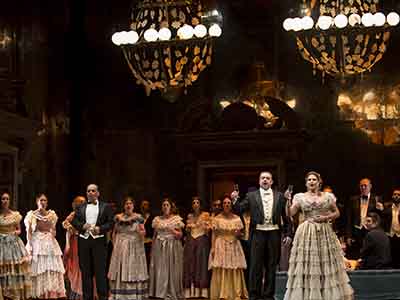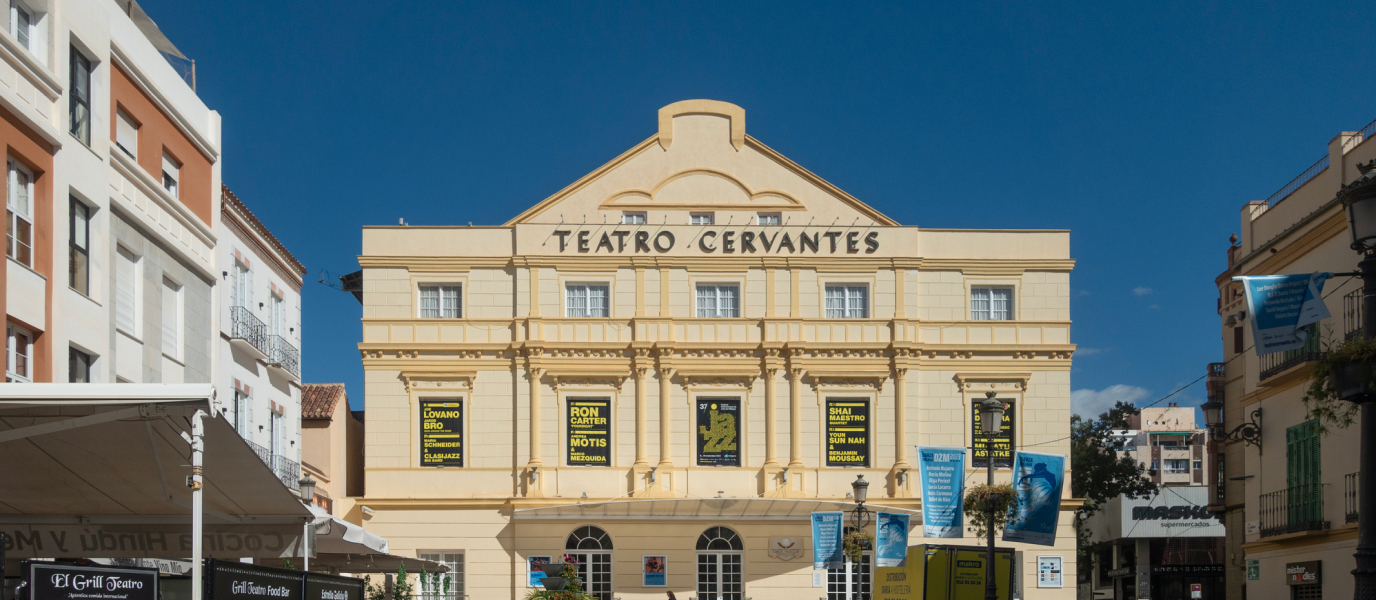In the early hours of the 20th of March 1869, one of Málaga’s most popular theatres went up in flames: the Teatro del Príncipe Alfonso (previously the Teatro de La Merced), named in honour of the future King, Alfonso XII, since Queen Isabella II visited the city in 1862. Left without a space to fulfil their cultural and leisure needs, the city’s thriving bourgeoisie decided to club together and build a large new theatre that, after just a few months of construction, would be inaugurated at the end of 1870: the Teatro Cervantes. From then on, for nearly 150 years now (the anniversary will be in 2020), this neo-Classical building, declared an Asset of Cultural Interest in 2005, has been a guiding light of the performing arts in Málaga, although it has had its moments in the shade. Today, it’s famous for being the main venue of the Málaga Film Festival, which rolls out the red carpet every April to welcome the stars of Spanish cinema.
The Teatro Cervantes: the oldest in Málaga

It’s not long at all until Málaga’s oldest theatre celebrates its 150th birthday, so it’s worth having a quick run through its history. Opened on 17 December 1870 with a symphonic version of the opera William Tell, the building, designed by the local architect Gerónimo Cuervo, was remarkable at the time for two reasons: its large capacity (2,300 seats, although that number has now been reduced to 1,171), and the spectacular decoration created by the painter Bernardo Ferrándiz, who we’ll talk about later on. All that, along with its sombre neo-Classical façade and its elegant, horseshoe-shaped, four-tiered seating area, meant that, even back then, it was worthy of the title of Historic-Artistic Monument.
Despite the success it had enjoyed back then, as the decades went by the theatre ended up falling into a state of abandonment, which became unsustainable in 1950. That year, its owners refurbished the building’s interior to give it a new use, altering its original design and layout. They created a bar and added a cinematographic projector, meaning the Teatro Cervantes was now a mere cinema. It was to be resurrected in 1984, when the City Hall took the theatre on and began an in-depth refurbishment to recover its original essence. The grand reopening, presided over by Queen Doña Sofía on 6 April 1987 and livened up by the City of Málaga’s Symphonic Orchestra, was a great success that would earn the new Teatro Cervantes two prizes: the UNESCO Europe Nostra and the Best Andalusian Restoration, in 1987.
The spectacle isn’t just on the stage, it’s on the ceiling: the huge canvas painting by Bernardo Ferrándiz
Once you’re seated, there’s a detail that you might miss if you don’t look up. The Alegoría de la Historia, Industria y Comercio de Málaga [Allegory of the History, Industry and Trade of Málaga] is a colossal oil painting on canvas (19 x 16.5 metres), which the painter Bernardo Ferrándiz used to decorate the ceiling of the seating area in the nineteenth century. The painting is a window into an allegorical representation of the city, incarnated in the figure of the Fine Arts, in the centre. Surrounding her are all of the things that turned Málaga into an economically prosperous city. In the lower section is the port, with the porters loading and unloading goods, and the marengos (fishermen) unfurling the copo, a large net that was dragged to shore. On the right is the old sugar factory and Málaga’s blast furnaces, representing Industry. On the left is the then relatively new train station, representing Progress.
This painting is the most emblematic one in the theatre, but just in front of it, on the main curtain, you can see another piece by the same painter. Recently restored, on it you can see a self-portrait of the painter as the figure of Mephistopheles, who draws back the curtain to reveal a world populated by characters from works of theatre.
The Málaga Spanish Film Festival
Since the Teatro Cervantes reopened 32 years ago, its stage has been graced by shows of all shapes and sizes, from comedies and classic dramas to operas, ballets, jazz concerts, flamenco concerts, rock concerts and musicals, positioning itself at the vanguard of Spanish theatre. However, the event that has earned it the most popularity is that which it hosts every spring, usually in April. The Málaga Spanish Film Festival has been held annually since 1998. This is the most important date in the calendar of the Spanish film industry. The biggest releases of the year compete here, as do other, less widely known pieces, such as documentaries and short films. The films that are part of the Official Selection are shown in the Teatro Cervantes, and press conferences are held here. The closing ceremony, at which the best film receives the Biznaga de Oro, the festival’s most prestigious award, also takes place here.







































































